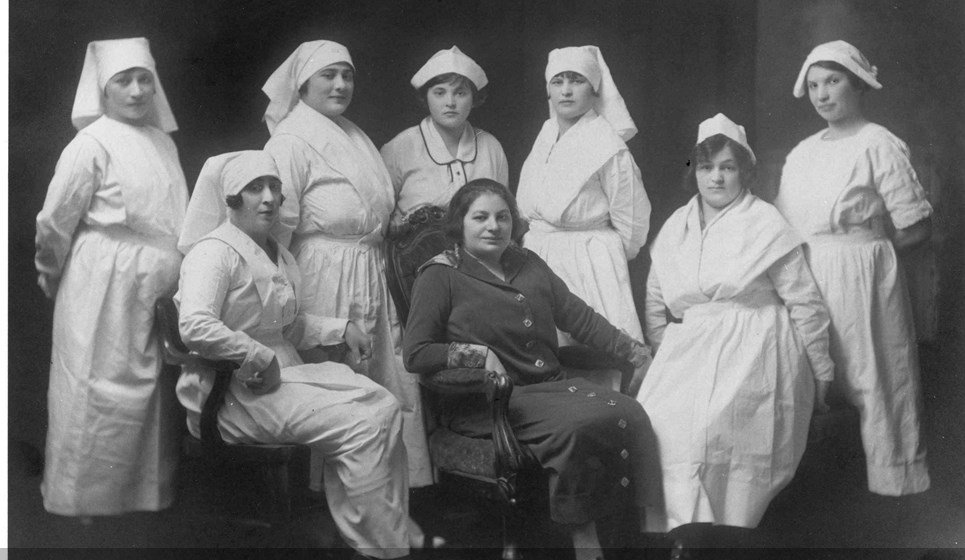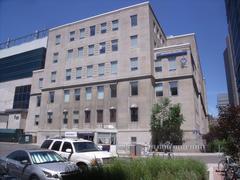
Mount Sinai Hospital Toronto Visiting Hours, Tickets, and Visitor Guide
Date: 15/06/2025
Introduction to Mount Sinai Hospital Toronto
Located at 600 University Avenue, Mount Sinai Hospital is a cornerstone of Toronto’s healthcare system, distinguished by its medical excellence and rich cultural heritage. Established in 1913 by Toronto’s Jewish immigrant community, Mount Sinai was Canada’s first hospital to offer kosher food and provide opportunities to Jewish physicians during an era of widespread discrimination. Over the years, it has transformed from a maternity hospital into a renowned academic health centre affiliated with the University of Toronto, excelling in genetics, oncology, women’s health, psychiatry, and cardiology. The ongoing “Renew Sinai” redevelopment project further demonstrates the hospital’s commitment to modernization and patient-centered care. With full accessibility and a central downtown location, Mount Sinai welcomes patients, families, and visitors interested in its history, architecture, and healthcare innovations. For more details, consult the hospital’s official website, architectural guide, and visitor information.
Table of Contents
- Introduction to Mount Sinai Hospital Toronto
- Historical Overview and Evolution
- Visitor Information
- Architectural Highlights
- Location Advantages and Visitor Information
- Visitor Policies and Practical Guide
- Frequently Asked Questions (FAQ)
- Conclusion and Call to Action
- References & Further Reading
Historical Overview and Evolution
Founding and Early Years (1913–1930s)
Mount Sinai was founded through the efforts of four immigrant women—Mrs. Cohn, Mrs. Spiegel, Mrs. Adler, and Mrs. Miller—who raised $12,000 to open the Toronto Jewish Convalescent and Maternity Hospital at 100 Yorkville Avenue in 1922. By 1923, it was renamed Mount Sinai Hospital, establishing itself as an inclusive institution that provided kosher food and welcomed Jewish healthcare professionals.
Expansion and Community Challenges (1930s–1950s)
By 1928, the hospital expanded with a surgical wing to meet growing needs. Despite economic hardships during the Great Depression, Mount Sinai remained a community hub through fundraising and volunteer support. It advocated for teaching hospital status and greater inclusivity.
Relocation and Modernization (1950s–1980s)
After WWII, the hospital moved to its present site at 600 University Avenue in 1953, positioning itself among Toronto’s leading hospitals and enabling greater collaboration and advanced care.
Research and Academic Leadership (1980s–Present)
The creation of the Samuel Lunenfeld Research Institute in 1985 (now Lunenfeld-Tanenbaum Research Institute) cemented Mount Sinai’s role as a research leader. Today, the hospital is globally recognized for its specialties and continues to modernize through the “Renew Sinai” project.
Cultural and Social Significance
Mount Sinai is a symbol of resilience, equity, and diversity, maintaining its heritage while setting benchmarks for inclusive and culturally sensitive care in Canada.
Visitor Information
Visiting Hours
- General Visiting: 11:00 AM – 8:00 PM daily.
- Family Presence: Families and caregivers are welcome 24/7, with quiet hours from 10:00 PM to 7:00 AM (one visitor per patient during these hours).
- Unit-Specific Restrictions: Some units (e.g., Emergency) have special restrictions. Always check with the hospital or specific department prior to visiting.
Accessibility
Mount Sinai is fully accessible, featuring ramps, elevators, accessible parking, and Wheel-Trans drop-off points. Language assistance and interpretation in over 45 languages are available.
Entry and Visitor Passes
Admission is free. Visitors check in at the main entrance and may require passes or health screening, especially during periods of heightened public health measures.
Getting There and Parking
- Public Transit: Steps from St. Patrick and Queen’s Park subway stations. Accessible via TTC streetcars on College and Dundas Streets.
- Parking: Available at 60 and 40 Murray Street with multi-day passes and accessible shuttle services.
- Drop-off/Pick-up: Use the Murray Street entrance; note parking and traffic restrictions during rush hours.
Nearby Attractions
Mount Sinai’s location puts visitors close to Queen’s Park, the Royal Ontario Museum, University of Toronto, and multiple downtown neighborhoods offering dining, shopping, and cultural sites.
Special Events and Guided Tours
While regular public tours are not offered, Mount Sinai occasionally hosts health awareness events and community galas. Check the hospital events calendar for updates.
Photography
Photography is prohibited in patient care areas. The hospital’s exterior, Star of David pilasters, and surrounding gardens offer excellent photo opportunities.
Architectural Highlights
”Renew Sinai” Modernization
Mount Sinai is undergoing its largest redevelopment, modernizing about one-third of its space over three phases (UrbanToronto):
- Phase I: Vertical expansion (2012), adding six floors and 160,000 sq. ft. to women’s and infant’s health.
- Phase II: Maternal and neonatal upgrades (2014), including a new NICU, expanded Labour and Delivery Unit, and enhanced patient comfort.
- Phase III: Ongoing, doubling Emergency Department capacity, adding 19 new operating rooms, and expanding ICU beds.
Patient-Centered and Inclusive Design
Features a welcoming lobby, clear wayfinding, barrier-free navigation, and family-focused amenities like the Hennick Family Wellness Centre. The hospital includes a synagogue, kosher food services, and a Shabbat elevator, reflecting its heritage.
Technology and Safety
Integrates advanced medical technologies (robotic surgery, 3D imaging), a philanthropic-funded security command centre, and state-of-the-art infection control.
Sustainability
Design incorporates natural light, green spaces, and environmental best practices.
Location Advantages and Visitor Information
Central Discovery District Location
Mount Sinai’s placement at the heart of Toronto’s Discovery District facilitates collaboration with neighboring hospitals and research institutes (Mapcarta).
Transportation
- Public Transit: Subway and TTC streetcar access.
- Pedestrian Access: Wide sidewalks; pedestrian-friendly routes from nearby attractions and hotels.
- Parking: Multiple lots and accessible shuttles.
Amenities
Onsite and nearby food outlets, retail, pharmacies, and hotels are easily accessible. Information desks and hospital maps support wayfinding.
Safety
A robust security system and downtown location ensure a safe environment for all visitors and staff.
Visitor Policies and Practical Guide
Health and Safety
- Mask Policy: Mask-wearing is encouraged; medical-grade masks provided at entrances.
- Illness: Visitors with respiratory symptoms or recent COVID-19 should postpone visits.
- Hand Hygiene: Frequent handwashing is encouraged.
Communication and Support
- CareMail: Friends and family can send free messages to inpatients, delivered by volunteers (Sinai Health CareMail).
- Patient Relations: For feedback, contact 416-586-4800 ext. 5066 or [email protected].
- Language Support: Over 100 languages supported (Toronto Service Directory).
Maps and Wayfinding
Hospital maps are available online and at entrances (Sinai Health Maps). Main locations include 600 University Avenue, 60 Murray Street, and 700 University Avenue.
Educational Visits
International observers are welcomed through academic partnerships. Contact Dr. Christie Lee at [email protected] for inquiries (Critical Care Toronto).
Emergency and Key Contacts
- General Inquiries: 416-586-4800
- Emergency Department: Entrance via Murray Street
- Nurse Advice: 8-1-1 (24/7)
- Social Services: 2-1-1 (24/7)
Frequently Asked Questions (FAQ)
Q: What are Mount Sinai Hospital’s visiting hours?
A: Generally 11:00 AM–8:00 PM, with 24/7 family presence and quiet hours from 10:00 PM–7:00 AM (one visitor per patient).
Q: Is Mount Sinai accessible for those with disabilities?
A: Yes, with barrier-free entrances, elevators, accessible parking, and Wheel-Trans services.
Q: Do I need a visitor pass or ticket?
A: No tickets required. Some areas may require visitor passes or screening.
Q: Can I send messages to patients?
A: Yes, via the free CareMail service.
Q: Are food services available onsite?
A: Yes, with additional options nearby on College Street and University Avenue.
Q: How do I get there by public transit?
A: Take the Line 1 subway to St. Patrick or Queen’s Park stations, or TTC streetcars on College and Dundas.
Conclusion and Call to Action
Mount Sinai Hospital Toronto represents the intersection of history, cultural inclusivity, and medical innovation. Its central location, comprehensive visitor support, and ongoing modernization make it a welcoming destination for patients, families, and anyone interested in Toronto’s healthcare landscape. For the latest visitor updates, events, and planning tools, visit the official Sinai Health website or download the Audiala app for real-time news and guidance. Follow us on social media for visitor tips and updates about Toronto’s medical and historical landmarks.
References & Further Reading
- Mount Sinai Hospital Toronto: History, Visitor Information & Tips for Tourists
- Mount Sinai Hospital: A Historic Landmark in Toronto’s Healthcare and Community Landscape
- Mount Sinai Hospital Toronto: Architectural Highlights, Visiting Information & Location Guide
- Mount Sinai Hospital Visitor Information and Practical Guide




























































































































































































